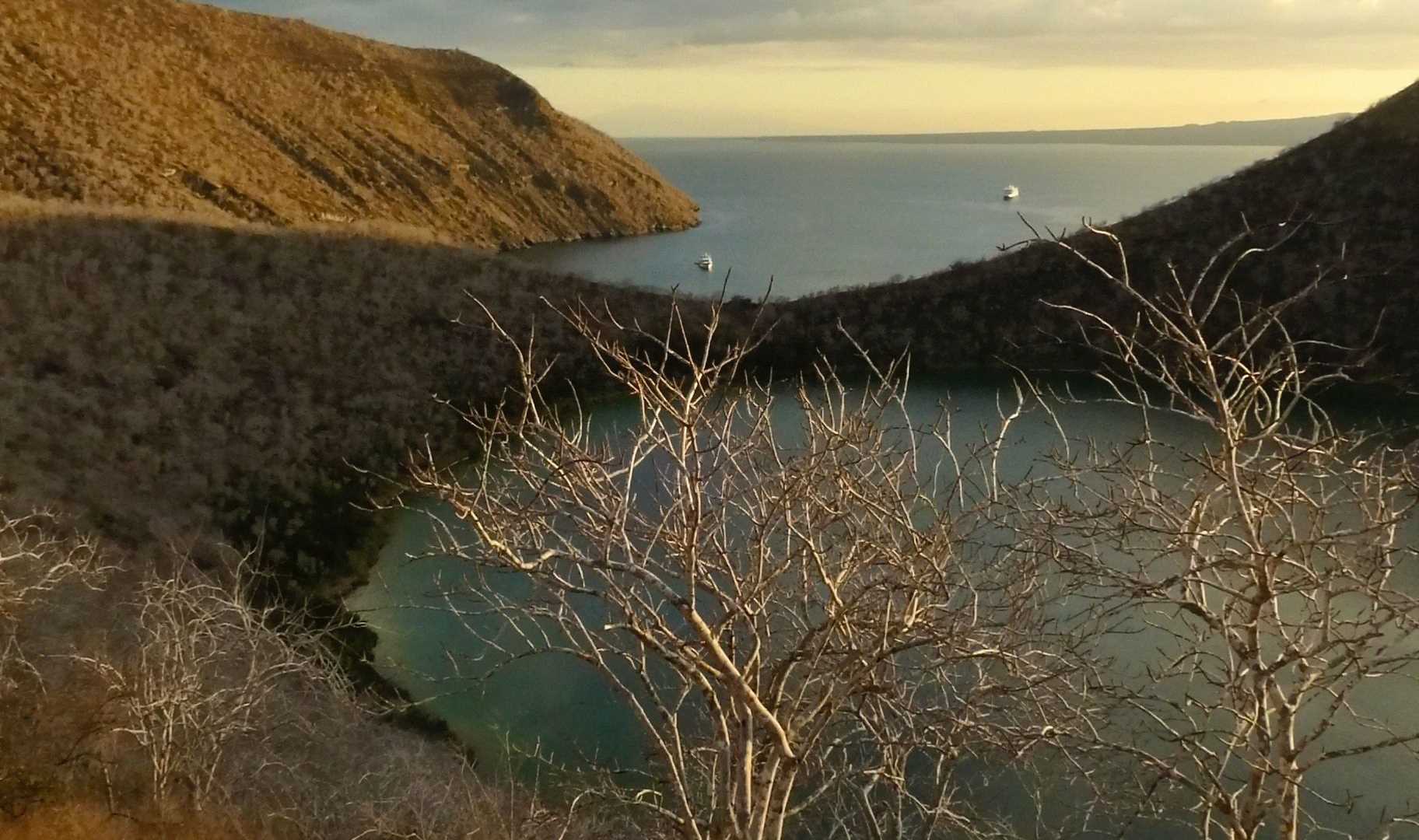It was our second day on Isabela Island, and we’ve had the chance to observe marine creatures found only in this part of the archipelago, where the water is very rich in nutrients.
Land iguanas inhabit this part of Urbina Bay. The terrain here is warm and soft—the perfect habitat for reptiles—so they can easily make their burrows and find enough food. Vegetation is everywhere, providing poison apples, leaves, and different species of greens that make up the diet of a healthy iguana population.
An interesting fact about the flora of the Galápagos: The flowers here are mostly yellow and white because of a lack of local pollinators—not very many have arrived in the archipelago naturally. One of the prettiest blooms is the cotton flower, which is pollinated by the big carpenter bee.
In the afternoon, we went for a fast-paced walk. We stopped at Darwin’s Lake, a turquoise and brackish lagoon, surrounded by a dense forest of palo santo or incense trees. We continued toward a lookout point from which we had an amazing view of the landscape filled with beautiful colors in the afternoon light.
Tagus Cove was the perfect place to think about how interesting these islands really are. The diversity of creatures here has amazed us and kept us wondering how evolutionary processes take place… It’s all a matter of time.







